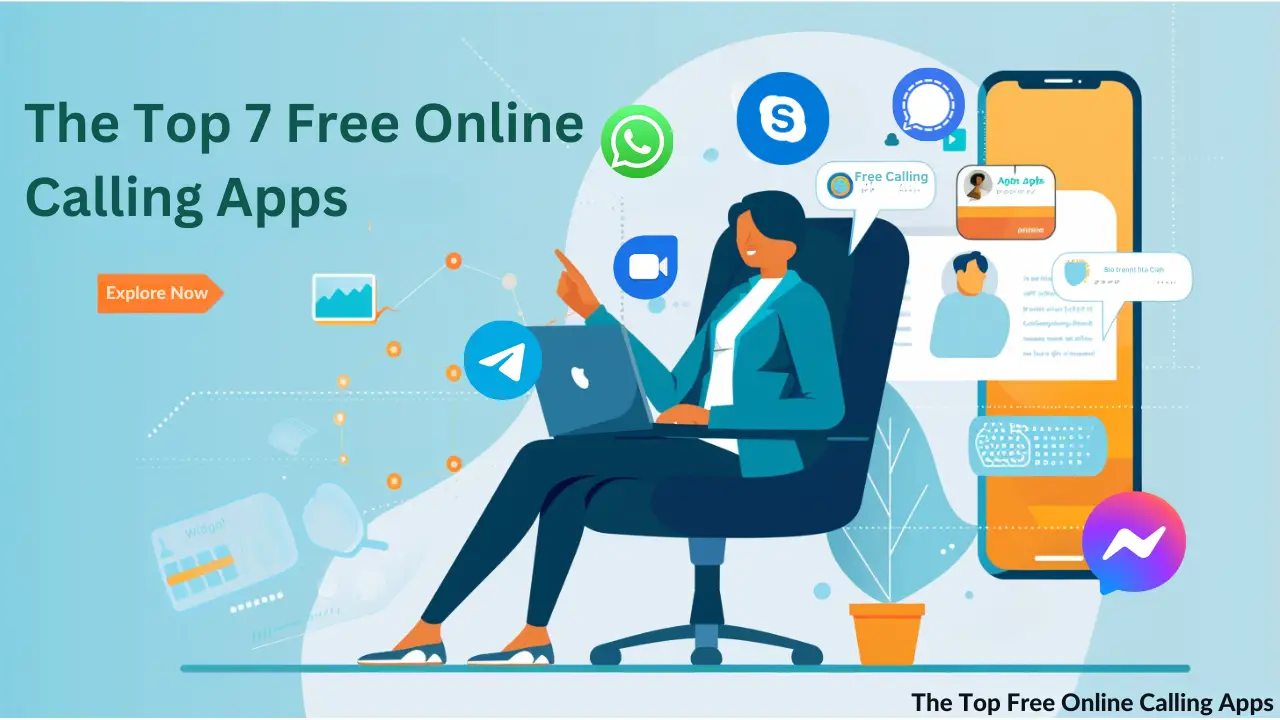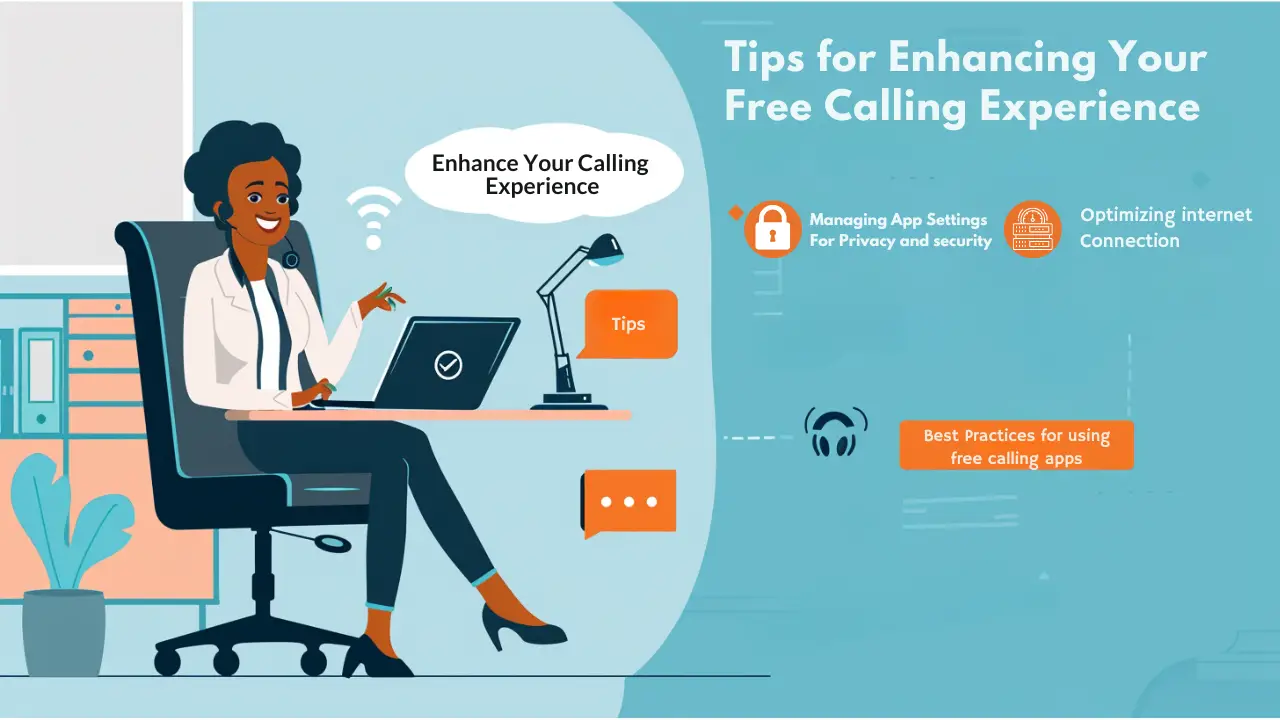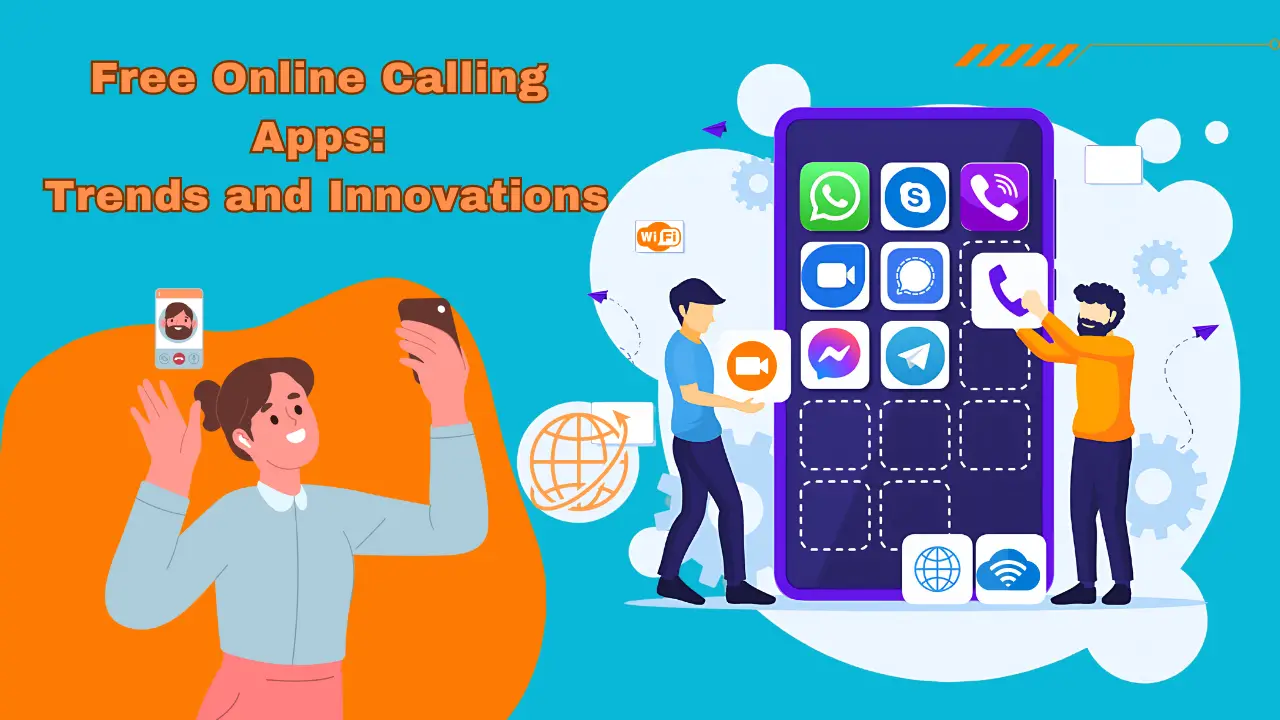Introduction
In this blog post, we’ll explore the exciting future of free online calling apps and how they’re shaping the way we communicate globally. Some apps offer data completely free, allowing users to access essential apps without worrying about paying for a data plan. As technology advances at a rapid pace, these apps are poised to revolutionize the way we connect with others, both personally and professionally. Additionally, free essential data is available with some apps, providing access to essential mobile applications without the need to pay for a data plan. We’ll delve into the emerging technologies, expected advancements, and key trends that are driving innovation in this space.
Key Takeaways:
- AI-powered features like noise cancellation, auto-translation, and AR filters are enhancing the online calling experience.
- 5G networks and WebRTC advancements will enable seamless, high-quality video calls accessible through web browsers.
- Privacy and security will be top priorities, with end-to-end encryption and decentralized apps gaining prominence.
- Online calling apps will cater to the needs of remote teams with collaboration tools and features that mimic in-person interactions.
Criteria for Selecting the Best Free Online Calling Apps
When choosing the best free online calling apps, it’s essential to consider several key factors to ensure a reliable and user-friendly experience:
- Free phone service: Look for apps that offer free phone service with no monthly contracts, zero-dollar monthly fees, and unlimited calling and texting. This feature ensures you can stay connected without worrying about bills.
- Free second phone line: Consider apps that provide a free second phone line for private calling, texting, or as a separate business line. This can be particularly useful for maintaining privacy or managing business communications.
Key Features to Consider
Call Quality
High-definition voice and video calling are crucial. Look for apps that maintain consistent call quality with minimal dropouts or lag, even on slower internet connections. Many top apps use advanced codecs and optimization techniques to enhance call quality, providing a seamless communication experience.
Ease of Use
An intuitive interface is vital. Features like simple contact integration, quick dial options, and clear call buttons enhance user experience. An easy setup process without complicated configurations is also important. The app should be straightforward to navigate, even for users who are not tech-savvy, ensuring accessibility for all age groups.
Compatibility
Ensure the app works seamlessly across a range of devices and operating systems, including Android, iOS, Windows, and Mac OS. This guarantees communication with friends and family regardless of their device. Additionally, compatibility with various internet connections (Wi-Fi, 4G, 5G) ensures you can use the app wherever you go.
Security, Privacy, and International Calls Considerations
Encryption
Opt for apps offering end-to-end encryption to ensure that only you and the person you’re communicating with can access the content of your calls. This is especially important in protecting sensitive conversations from potential eavesdroppers and maintaining privacy.
Data Handling Policies
Choose apps with transparent privacy policies that do not sell user data to third parties and offer options to delete your account and data permanently. It’s crucial to understand what data is being collected and how it is used. Apps that prioritize user privacy and security help build trust and ensure safe communication.
Cross-Platform Availability and User Support
Multi-Device Sync
The ability to sync conversations and call history across multiple devices is valuable. This ensures you can switch between your phone, tablet, or computer without losing information. It provides flexibility and convenience, allowing you to stay connected no matter which device you are using.

User Support
Reliable customer support is essential for resolving issues. Look for apps with robust support options, including FAQs, tutorials, and direct support channels like email or live chat. Good customer support can help you quickly address any problems, ensuring a smooth and uninterrupted communication experience.
By considering these criteria, you can select the best free online calling app that meets your needs. Prioritizing call quality, ease of use, security, and cross-platform compatibility ensures a reliable and enjoyable communication experience. With the right app, you can stay connected with loved ones and colleagues effortlessly, no matter where you are.
App 1: WhatsApp – The All-in-One Communication Tool
Features and Functionalities
WhatsApp offers text messaging, voice and video calls, group chats, media sharing, and end-to-end encryption. It supports cross-platform compatibility and syncs across devices. WhatsApp requires a free phone number for registration, which allows users to make calls and send texts.
Pros and Cons
Pros:
- High call quality
- Easy-to-use interface
- Secure encryption
- Widely used and recognized
Cons:
- Requires a phone number
- Limited to 8 participants in group calls
How to Make Free Calls Using WhatsApp
- Open WhatsApp and select a contact.
- Tap the call icon (phone for voice call, video camera for video call).
- The call will initiate and connect if the contact is online.
App 2: Skype – The Pioneer of Internet Calling
Features and Functionalities
Skype offers voice and video calls, instant messaging, screen sharing, and file transfer. It supports group calls with up to 50 participants and provides call recording and live subtitles. Skype also offers low-cost international calls to over 200 countries, highlighting its affordability and extensive coverage. Skype is available on multiple platforms, including Windows, Mac, iOS, Android, and Linux.
Pros and Cons
Pros:
- Supports large group calls
- High-quality video and audio
- Cross-platform compatibility
- Additional features like screen sharing and call recording
Cons:
- Requires a Microsoft account
- Some features require a subscription
Steps to Make Free Calls on Skype
- Download and install Skype from the official website or app store.
- Create a Microsoft account or log in with an existing one.
- Add contacts by searching for their Skype name or email.
- Select the contact you want to call.
- Click the call icon (phone for voice call, video camera for video call).
- The call will connect, allowing you to start your conversation.
App 3: Viber – Beyond Text and Voice Calls
Features and Functionalities
Viber offers free text messaging, voice and video calls, group chats, and multimedia sharing. It supports end-to-end encryption and provides additional features like Viber Out for calling non-Viber numbers at low rates, and public chat communities. Viber also offers free text messages to the US and Canada, along with voice and video calls.
Pros and Cons
Pros:
- High call quality
- End-to-end encryption
- Wide range of features including stickers and GIFs
- Cross-platform compatibility
Cons:
- Requires a phone number
- Some features, like Viber Out, are paid
Guide to Making Free Calls on Viber
- Download and install Viber from the official website or app store.
- Register with your phone number and verify it.
- Add contacts by syncing your phone contacts or searching by Viber ID.
- Select the contact you want to call.
- Tap the call icon (phone for voice call, video camera for video call).
- The call will initiate and connect if the contact is online.

App 4: Google Duo – High-Quality Video and Voice Calls
Google Duo is a video and voice calling app known for its simplicity and exceptional call quality. Designed to be user-friendly, Google Duo provides a seamless experience for personal and group calls. It focuses on delivering clear and high-resolution video calls, making it an ideal choice for both casual and professional communication.
Features and Functionalities
Google Duo offers high-quality video and voice calls, with the ability to handle low-bandwidth environments. It includes features like group calling for up to 32 participants, a “Knock Knock” feature to see live video previews before answering a call, and integration with Google Home devices. Duo also supports end-to-end encryption for secure communication. Additionally, Google Duo provides ‘free talk’ services, allowing users to make voice and video calls without worrying about phone bills.
Pros and Cons
Pros:
- Excellent video and audio quality
- Simple, user-friendly interface
- End-to-end encryption for privacy
- Integration with Google ecosystem
Cons:
- Limited to 32 participants in group calls
- Requires a Google account for best integration
Instructions for Making Free Calls with Google Duo
- Download and install Google Duo from the Google Play Store or Apple App Store.
- Sign in with your Google account.
- Verify your phone number if prompted.
- Add contacts by syncing with your phone contacts or searching by email or phone number.
- Select the contact you want to call.
- Tap the video call icon (camera) for a video call or the voice call icon (phone) for a voice call.
- The call will initiate and connect if the contact is online.
App 5: Facebook Messenger – Seamless Integration with Social Media
Facebook Messenger is an integral part of the Facebook ecosystem, offering a robust platform for text messaging, voice, and video calls. Its seamless integration with Facebook makes it a convenient choice for users who are already active on the social media platform. With a range of features designed to enhance communication, Facebook Messenger is a versatile tool for staying connected with friends and family.
Features and Functionalities
Facebook Messenger offers text messaging, voice and video calls, group chats, media sharing, and interactive features like stickers, GIFs, and reactions. It supports cross-platform compatibility, allowing users to switch between devices without losing their conversations. Messenger also provides options for creating chat rooms and broadcasting live video. Additionally, Facebook Messenger offers free texting to anywhere in the US and Canada, along with voice and video calls.
Pros and Cons
Pros:
- Seamless integration with Facebook
- High-quality video and voice calls
- Wide range of interactive features
- Cross-platform compatibility
Cons:
- Requires a Facebook account
- Privacy concerns due to data sharing with Facebook
How to Make Free Calls Using Facebook Messenger
- Open the Facebook Messenger app and log in with your Facebook account.
- Select a contact from your chat list or search for a new contact.
- Tap the call icon (phone for voice call, video camera for video call) at the top right of the chat screen.
- The call will initiate and connect if the contact is online.
App 6: Telegram – Secure and Versatile Communication
Telegram is renowned for its strong emphasis on security and versatility. It offers a wide array of communication features that make it a popular choice among users who prioritize privacy. With its cloud-based infrastructure, Telegram ensures fast and efficient messaging and calling, along with numerous customization options.
Features and Functionalities
Telegram provides text messaging, voice and video calls, group chats, and media sharing. It supports large groups and channels, with up to 200,000 members, and includes features like self-destructing messages, secret chats with end-to-end encryption, and extensive bot integration for various tasks. Additionally, Telegram offers free phone calls, emphasizing the ease and reliability of making calls without traditional mobile phone plans.
Pros and Cons
Pros:
- Strong focus on security and privacy
- End-to-end encryption for secret chats
- Large group capacity and channel options
- Fast and reliable cloud-based messaging
Cons:
- Not all chats are end-to-end encrypted by default
- Requires a phone number for registration
Making Free Calls on Telegram
- Download and install Telegram from the official website or app store.
- Register with your phone number and verify it.
- Add contacts by syncing your phone contacts or searching by username.
- Open a chat with the contact you want to call.
- Tap the call icon (phone) at the top right of the chat screen.
- The call will initiate and connect if the contact is online.
App 7: Signal – Privacy-Focused Calling and Messaging
Signal is a leading app for privacy-focused communication, offering secure messaging and calling. Developed by the non-profit Signal Foundation, it prioritizes user privacy and data security above all. Signal provides a simple yet powerful platform for text, voice, and video communication, making it a preferred choice for users who value confidentiality.
Features and Functionalities
Signal offers end-to-end encrypted text messaging, voice and video calls, group chats, and media sharing. It includes features like disappearing messages, encrypted group calls, and enhanced privacy settings. Signal also provides a secure phone service, including end-to-end encrypted text messaging, voice and video calls. Signal is available across multiple platforms, including Android, iOS, Windows, Mac, and Linux, ensuring seamless cross-device usage.
Pros and Cons
Pros:
- Strong emphasis on privacy and security
- End-to-end encryption for all communications
- Simple, clean user interface
- No ads or tracking
Cons:
- Requires a phone number for registration
- Limited to 8 participants in group calls
Steps to Make Free Calls on Signal
- Download and install Signal from the official website or app store.
- Register with your phone number and verify it.
- Add contacts by syncing your phone contacts or manually entering their numbers.
- Open a chat with the contact you want to call.
- Tap the call icon (phone for voice call, video camera for video call) at the top right of the chat screen.
- The call will initiate and connect if the contact is online.
Comparing the Top 7 Apps: Which One is Right for You?
Choosing the best free online calling app depends on your specific needs and preferences. Here’s a comparative analysis of the top seven apps, highlighting their unique features and user preferences, along with tips for making the best choice.

Comparative Analysis of All Seven Apps
| Feature | Skype | Viber | Google Duo | Facebook Messenger | Telegram | Signal | |
|---|---|---|---|---|---|---|---|
| Call Quality | High | High | High | Excellent | High | High | High |
| Ease of Use | Very Easy | Easy | Easy | Very Easy | Easy | Easy | Easy |
| Compatibility | Cross-platform | Cross-platform | Cross-platform | Cross-platform | Cross-platform | Cross-platform | Cross-platform |
| Encryption | End-to-end | Limited | End-to-end | End-to-end | Limited | End-to-end | End-to-end |
| Group Call Capacity | Up to 8 | Up to 50 | Up to 20 | Up to 32 | Up to 50 | Up to 200,000 (text) | Up to 8 |
| Additional Features | Media sharing | Screen sharing | Stickers, Viber Out | Knock Knock | Live video | Bots, Channels | Disappearing msgs |
| Privacy Policies | Transparent | Transparent | Transparent | Transparent | Concerns due to FB | Transparent | Highly transparent |
| User Support | Robust | Robust | Adequate | Adequate | Robust | Adequate | Adequate |
Highlighting Unique Features and User Preferences
- WhatsApp: Ideal for versatile, secure communication with excellent call quality and easy-to-use interface.
- Skype: Best for large group calls and features like screen sharing and call recording, suitable for both professional and personal use.
- Viber: Offers interactive features like stickers and Viber Out, perfect for users who enjoy engaging communication.
- Google Duo: Known for high-quality video calls and simplicity, ideal for straightforward, high-quality video calling.
- Facebook Messenger: Convenient for Facebook users with interactive features like live video and chat rooms.
- Telegram: Focuses on security and customization, supporting large groups and channels, ideal for privacy-conscious users.
- Signal: The best choice for users prioritizing privacy and security, with a simple, clean interface.
Tips for Choosing the Best App Based on Individual Needs
-
- Assess Your Priorities: Determine the most important features—call quality, privacy, group call capacity, or compatibility.
- Consider Your Network: Choose an app that your contacts are already using for seamless communication.
- Evaluate Security Needs: If privacy is a top concern, choose apps like Signal or Telegram for robust encryption.
- Test Multiple Apps: Try a few apps to find the best fit in terms of usability and performance.
- Think About Future Use: Consider how the app fits your long-term needs, including potential updates and new features.
By evaluating these factors, you can select the best free online calling app to suit your needs, ensuring a reliable and enjoyable communication experience.
Tips for Enhancing Your Free Calling Experience
Maximizing the quality and security of your free online calls can significantly improve your communication experience. Here are essential tips:
Optimizing Internet Connection
-
-
- Ensure Strong Signal: Position yourself close to your Wi-Fi router or use a wired connection for stability. For mobile data, ensure a strong signal and sufficient data plan.
- Close Unnecessary Apps: Shut down background apps to free up bandwidth and improve call quality.
- Update Router Firmware: Keep your router firmware updated to enhance performance and security.
- Limit Network Usage: Minimize streaming and downloads during calls to maintain adequate bandwidth.
-
Managing App Settings for Privacy and Security
-
-
- Enable Encryption: Choose apps with end-to-end encryption to safeguard your conversations.
- Adjust Privacy Settings: Review app settings to control who can contact you and what information is visible.
- Regular Updates: Keep your calling app updated for the latest security patches and improvements.
- Manage Permissions: Only grant necessary permissions to protect your privacy.
-
Best Practices for Using Free Calling Apps
-
-
- Test Audio and Video: Before important calls, ensure your microphone and camera settings are optimized.
- Use Headphones: Improve call quality by using headphones with a built-in microphone.
- Mute When Not Speaking: Reduce background noise by muting your microphone when you’re not talking.
- Schedule Calls Wisely: Opt for off-peak hours to avoid network congestion and ensure better call quality.
- Explore App Features: Familiarize yourself with features like call recording and screen sharing to maximize your app’s utility.
-

Following these tips will optimize your free calling experience for clear, secure, and effective communication without unnecessary details.
Future of Free Online Calling Apps: Trends and Innovations
As free online calling apps continue to evolve, several emerging technologies and advancements are shaping the future of global communication. Here’s a look at what’s on the horizon:
Emerging Technologies in Free Calling App
-
-
- 5G Integration: With the rollout of 5G networks, online calling apps will leverage faster speeds and lower latency, enhancing call quality and video resolution.
- Artificial Intelligence (AI): AI-powered features such as real-time language translation, smart noise cancellation, and voice recognition are expected to become standard, improving user experience during calls.
- Augmented Reality (AR): AR could revolutionize video calls by overlaying virtual elements, creating immersive communication environments.
- Blockchain for Security: Implementing blockchain technology for enhanced data security and privacy in online calls is gaining traction, ensuring encrypted and tamper-proof communications.
-
Expected Advancements and Features
-
-
- Enhanced Video Quality: Continued improvements in video compression and encoding technologies will enable higher resolution and smoother video streaming.
- Multi-Device Integration: Seamless synchronization across multiple devices, including smartphones, tablets, and desktops, ensuring uninterrupted communication.
- Advanced Collaboration Tools: Integrated tools for document sharing, virtual whiteboards, and collaborative editing during calls will enhance productivity for business users.
- Personalization and Customization: Apps will offer more customizable settings for user preferences, from interface themes to notification preferences.
-
Shaping Global Communication Trends
-
-
- Increased Accessibility: Free online calling apps are bridging communication gaps globally, providing affordable and accessible means of communication across borders.
- Rise of Remote Work: As remote work continues to grow, these apps facilitate virtual meetings, team collaboration, and client interactions seamlessly.
- Cultural Exchange and Global Connectivity: Online calling apps facilitate cultural exchange and global connectivity, enabling individuals and businesses to connect and collaborate effortlessly worldwide.
- Environmental Impact: By reducing the need for physical travel, these apps contribute to reducing carbon footprints and promoting environmental sustainability.
-
The future of free online calling apps is poised for transformative changes with advancements in technology, enhancing communication efficiency, security, and user experience on a global scale.

Conclusion
The future of free online calling apps is undeniably exciting, with a plethora of innovative technologies and trends on the horizon. As these apps continue to evolve and integrate cutting-edge features, they will transform the way we communicate and collaborate on a global scale. The convergence of AI, 5G, WebRTC, and blockchain technologies will create a new paradigm in online calling, one that prioritizes quality, accessibility, privacy, and seamless user experiences.
Moreover, the widespread adoption of remote work will further fuel the development of online calling apps, as businesses seek to enable their distributed teams with the tools they need to stay connected and productive. The apps that can successfully recreate the essence of in-person interactions while offering robust collaboration features will emerge as leaders in this space. As we move forward, it’s clear that free online calling apps will not only shape the future of communication but also play a pivotal role in driving global connectivity and empowering the next generation of digital natives.
FAQs
When selecting a free online calling app, prioritize high call quality, ease of use, cross-platform compatibility, and robust security features like end-to-end encryption. Additional features such as group calling capacity and collaboration tools may also be important depending on your needs.
To optimize call quality, ensure a strong and stable internet connection, close unnecessary background apps, and use a high-quality headset or earphones with a built-in microphone. Regularly updating your app and device software can also help maintain optimal performance.
Many free online calling apps offer end-to-end encryption to protect your conversations. To further safeguard your privacy, choose apps with transparent privacy policies, adjust your app settings to control who can contact you, and be mindful of granting unnecessary permissions.
Yes, many free online calling apps are suitable for business use, offering features like group calls, screen sharing, and collaboration tools. Apps like Skype and Google Meet are popular choices for professional communication and virtual meetings.
The future of free online calling apps includes the integration of AI-powered features like real-time translation and noise cancellation, the adoption of 5G networks for enhanced call quality and speed, and the potential use of AR and VR technologies for immersive communication experiences.




